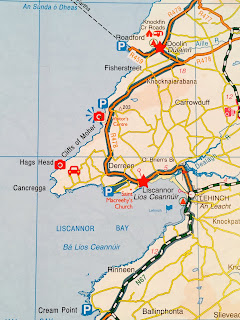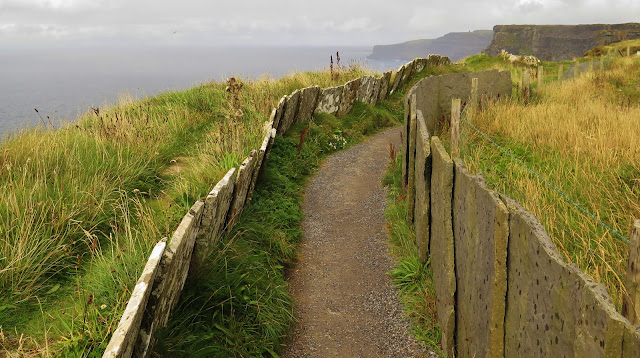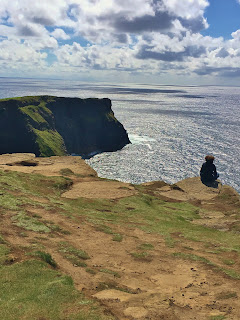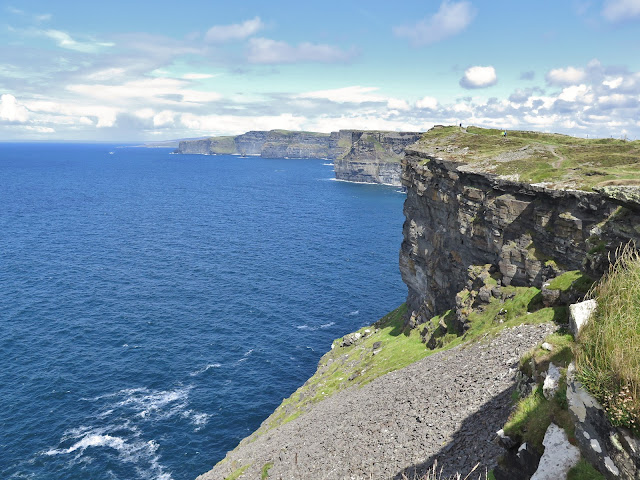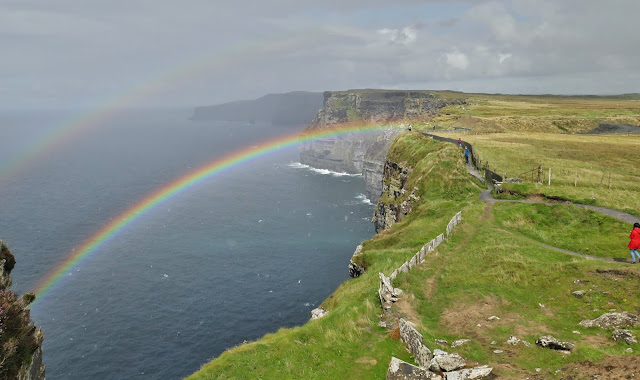North of Dublin, lies a group of mysterious burial mounds, some of which are 500 years older than the pyramids of Giza. Thought to be entrances to the Fairy realm, a visit to Brú na Bóinne IS entering an enchanting world...of the past.
 |
| More Burial Mounds In Farmer's Fields |
 |
| Entrance To Visitor Centre |
If you are heading to this historic site, there are a few things to note. 1. It gets hectic during July and August so try to arrive at the visitor centre before 10:00 am to avoid long lines. 2. You can not visit the tombs on your own, you must be a part of the formal tour group from the Visitor Centre. 3. Newgrange is open year-round, and Knowth is only open May-October. So if you want to see both passage tombs, you must go during the warmer months. Dowth is known as "The Fairy Mound of Darkness" and is aligned to the Winter Solstice sunset. You can see the mound of Dowth by going directly to the site, but there is no public access to the tomb. There has been an active areological dig there in the past year when in July 2018 a passage tomb was discovered in nearby Dowth Hall possibly connecting it to Dowth mound.
We arrived first thing in the morning before the Visitor Centre opened-and yes, there was already a line-up! Once we got inside and purchased our tickets we had to wait a half hour for our shuttle bus, so we headed downstairs to the reasonably priced cafeteria for coffee and breakfast. Perfect.
THE VISITOR CENTRE IS TEMPORARILY CLOSED FROM MARCH 28TH 2019, FOR APPROXIMATELY 6 MONTHS FOR RENOVATIONS. THE TOMBS TOURS ARE STILL RUNNING FROM THE PARKING LOT.
 |
| Newgrange |
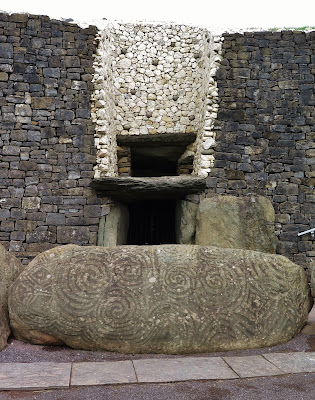 |
| Entrance To Newgrange |
The Brú na Bóinne visitor centre is open 9am to 7pm in the summer months. When you arrive at the visitor centre purchase your ticket for the tomb site of your choice; either Newgrange or Knowth (rhymes with South). Newgrange is €7, Knowth is €6, both are €13, and just the visitor centre is €4. When you purchase your ticket, you are assigned a time to board a shuttle bus that takes you to your selected passage tomb. The shuttle bus takes about 15 minutes to drive out to the site, where an archeologist will then meet you and give you a 30-minute guided tour explaining the significance of the ancient burial mound. For up to date information on the prices and times of tours visit the government website: http://www.heritageireland.ie/en/midlands-eastcoast/brunaboinnevisitorcentre/
So, you may be asking what is the difference between the two tombs; Newgrange and Knowth?
 |
| More Structures at Newgrange |
The OPW holds a yearly Winter Solstice Tour Lottery into Newgrange from December 18- 23, where a few lucky participants can witness the Winter Solstice sunrise at 8:58 am from inside the ritual chamber. for more information on how to enter the Lottery see the OPW website here: http://www.worldheritageireland.ie/en/bru-na-boinne/winter-solstice/
 |
| Kerbstone With Geometric Patterns |
Knowth is also a very impressive necropolis with it's superior geometrically carved kerbstones and passage tomb. There are two entrances, one East and one West that are is aligned to the sunrise on the Spring and Autumn Equinoxes. Unfortunately, you can not enter the actual burial mound, but there is a room built into the tomb where there is a cutaway so you can see into the passageway. You can also see how the mound was constructed with layers of rock and dirt that withstood 5000 years of the Irish elements.
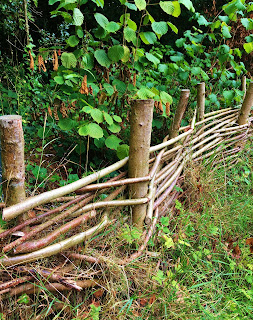 |
| Willow Fencing |
If you only have time (or patience) to see one of the Neolithic sites of Brú na Bóinne, then I would recommend NEWGRANGE. Even if the line up to Newgrange is longer, the visit inside the passage chamber was phenomenal. But, if you are not interested in going inside a passage tomb, then Knowth would be a better choice to visit.
For more history on Brú na Bóinne visit the government website: http://www.worldheritageireland.ie/bru-na-boinne/
or check out this fantastic website for everything you need need to know to explore this area: https://www.knowth.com/
There is a concentration of rich history to explore in the Boyne Valley beyond Newgrange such as The Hill of Tara, Monasterboice and Trim Castle just to name a few. Having your own vehicle to discover the area would be ideal. Otherwise, there are many tours of the Boyne Valley including Newgrange, that depart from Dublin each morning. Check out boynevalleytours.com they come highly recommended.
Have you visited Brú na Bóinne? What passage tomb did you prefer; Newgrange, Dowth or Knowth? Let me know in the comments below.
Follow me on FACEBOOK, INSTAGRAM and BLOGLOVIN' for daily photos and updates! #slowtravel🐌




